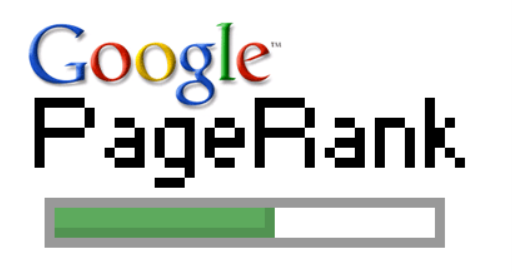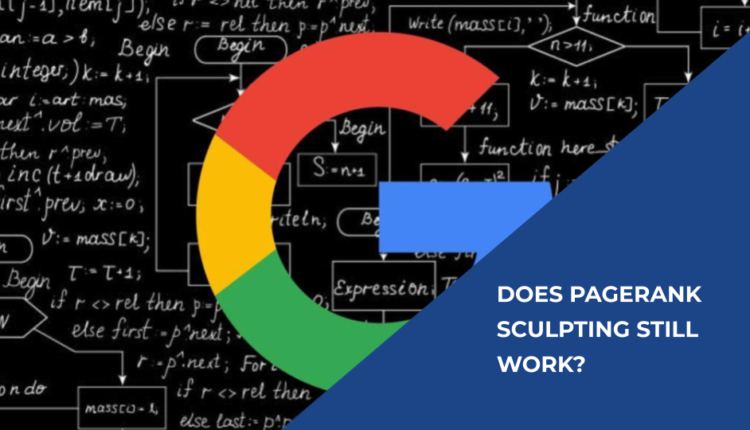Does PageRank Sculpting Still Work?
The art of PageRank Sculpting and getting on the first position on SERP
If you are new to the SEO world and would like to improve your website, so your content reaches the top of the search engine results page, you should focus first on your site architecture. This is the base for a good ranking on all search engines.
However, there are so many other elements going into your SEO strategy and how you should optimize your site to rank higher, that it can be overwhelming. Specifically, the question today is, how does PageRank work, and can you use what experts call PageRank sculpting your advantage?
Now, you may have heard about PageRank sculpting before, but in this article, we will explore a bit more in-depth about what it is, how it works, and how it has evolved across the years.
So let’s dig in!
What is page rank?
There was once a time when there was no SEO metric more important than PageRank. Otherwise known as “link juice”, essentially it brought links into the ranking equation, creating a new SEO focus. Back in the day, PageRank was represented by a green bar that reported the PageRank score from 0 to 10 for any webpage. The score was based upon the number and quality of the backlinks of a page.

PageRank had such a massive impact on the quality of search results that, within the span of a decade, it helped Google grow from a startup to the leading company we know and love, powering the most online queries in the world.
PageRank history
It was in 1996 that Google’s founders Sergey Brin and Larry Page, together with some other academics at Stanford developed and patented the system that would become PageRank. However, the patent for the system was granted to Stanford, and Brin and Page gave up shares in Google for exclusive rights to it.
Nevertheless, the idea for PageRank came from having a group of academics sitting around doing research. They were following citations in papers and noticed that the more times a paper was referenced by other papers, the more relevant and important it seemed to be. This became the foundation for link-based search algorithms.
In 2000, Google added the visual green bar to its toolbar, boosting the impact it would have. But, this toolbar was just an estimate of the real PageRank, internally the numbers were more complex than what was shown. However, Google provided everyone with a metric for measuring the value and potential impact any page could have.
![]()
At the time the competition for most terms was very low because there were not a lot of people doing SEO, but with this newfound information, the paradigm changed and links became very important.
How PageRank backfired
The visual green bar led to various black hat tactics as it opened up a whole marketplace for buying and selling links based on PageRank. Advertisers would go on link auction sites and pay sites with good PageRank to post their links there.
These tactics became problematic because users did not have a good experience when trying to find information. Since everything became so monetized, sites were no longer viewed as good sources of information for users but instead as a good source of publicity for advertisers and a good source of income.
As a response, in 2016 Google decided to end this feature, therefore not showing the rank information for pages. however, this was not the end of PageRank itself, as Google was still going to use the PageRank score as a factor when ranking content in the search results.
What changed was that webmasters now did not have access to that information and therefore couldn’t manipulate it as easily anymore. Instead, developers and marketers now needed to learn SEO best practices in order to rank high on SERP.
What is PageRank sculpting?
Now that you have an understanding of the overall PageRank situation, it is time to understand the concept of PageRank sculpting. So, PageRank sculpting basically allows you to control how your different pages on your website rank. In other words, the main idea behind this concept is that you would stop PageRank from flowing to less relevant pages of your site, therefore sending more rank to the ones you want to rank high to instead.
How was PageRank sculpting done?
To understand how it was done, you need to understand what is a nofollow link. Basically, nofollow links are links with a rel=”nofollow” HTML tag applied to them. The nofollow tag tells search engines to basically ignore that link, hence “no follow”.

In sinople terms, crawlers will see the link, and, because of the nofollow tag, they will stay on the page instead of moving away from it. Therefore, nofollow links do not pass PageRank they would be strategically used throughout your site, so you could significantly boost the SEO performance of your key pages by guiding the PageRank to them.
Does it still work?
Before 2009, nofollow links were ignored entirely for PageRank purposes. As such, the PageRank was divided between the “do follow” links equally. So, without PageScultping each page you link to would get an equal amount of point.
Let’s say you have a page with ten links. Those links share the score between them equally. But, if out of the ten links one of them would be a nofollow link, then only the remaining nine links would share the score, thus boosting their rank.
However, after 2009, if a page has ten links and one is nofollow, the flow of PageRank to the nine normal links is as if there are ten links on the page, regardless of the nofollow attribute. Basically, the score is still distributed equally, regardless of the nofollow rule, and each of the nine do follow links gets one point.
So, the short answer is no, as many other SEO Myths out there, PageRank Sculpting does not work anymore. Google engineer Matt Cutts also put down the idea of manipulating PageRank through the nofollow tag in his blog in 2009.
As Matt said in his blog and in the video above, the only way he would consider sculpting to be useful is not how it was typically done, but rather through highlighting your most valuable pages.
Conclusion
Worrying about how PageRank is flowing and how you can sculpt it is mostly a waste of time that could be better spent developing other more valuable areas of your website. It is understandable that you want your website to perform to the best of its abilities, but you may want to prioritize some other key aspects first. Your site architecture should be the priority because a good site structure will help Google crawl and index your site easily and it will also help users navigate better.
You need to focus on making great content that will attract links in the first place and create a site architecture that makes your site usable/crawlable for humans and search engines. Remember user experience is the core principle you should focus on when trying to improve the ranking of your website.

Comments are closed.